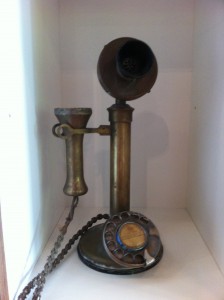The Jisc Mobile Learning Guide now features new case studies and video resources highlighting some interesting examples of inclusive mobile learning from across the UK. Although many of them focus on activity in the FE and skills sector, the case studies highlight the real value and potential that mobile technologies can play in finding individual solutions to support specific learners.
In the communication section of the mobile learning guide:
- The University of Glasgow worked closely with the company Appscool to create a series of literacy apps targeted at key areas of weakness which school pupils exhibit at national levels four and five in English during their examinations.
https://www.youtube.com/watch?v=5PhOoVLNfds
- Doncaster Deaf Trust described their involved in an international collaboration with 15 European learning institutions to develop a free, downloadable and interactive online sign language app called Spread the Sign App for D/deaf people. This enables them to see what sign to use when talking to people from different countries who use a different sign language than the user.
https://www.youtube.com/watch?v=r0ff-UnK0IE#t=152
- Derwen College describe how they use My Choice Pad and Story Creator apps for students with learning and communication difficulties to help build evidence for work portfolios.
- Weston College also use My Choice Pad app as a communication aid and described how learners use this to communicate their wants and needs by creating personalised grids.
https://www.youtube.com/watch?v=UbWgF4ukdJo
In the personalisation section of the mobile learning guide:
- City of Glasgow College described how built in features have assisted a student who has English as an additional language and a physical disability, to develop his literacy skills and to access text to speech using the inbuilt speak screen features of his iOS tablet device.
https://youtu.be/SCamtw-thG4
- Treloar College shared their use of iPads for independent learning and described their use of communication apps to offer independence, to control their learning, their environment and their leisure.
https://www.youtube.com/watch?v=jJ7oS9OZxwc
- Beaumont College shared examples of:
- How they used an app called Pictello to create visual recipes which were shared with the class wirelessly using Apple TV enabling the tutor to run through the recipe at the start of the session to check the group’s understanding.
- How they used the built in iPad photo tool as a communication tool in gardening classes.
- How a learner used the Grid2 software to aid communication in dance class.
In the sharing resources section of the mobile learning guide:
- The Royal National College for the Blind describe their Tech Novice Café where they provide peer support and 1:1 tuition for older blind people who want to learn about how to use technology to access information.
https://youtu.be/6AO0C-yWvaE
In the content creation section of the mobile learning guide:
- St John’s College describe how they create eBooks and video CVs using Book Creator, Storybird and iMovie. They also use an app called Kaleido as part of the sensory art session.
https://youtu.be/I1w4QvYEJpg
In the engaging learners with content linking section of the mobile learning guide:
- Swansea Lifelong Learning Service use a variety of apps to help students with low literacy levels and older learners to carry out research, planning and presentation in exciting and professional ways.
https://youtu.be/TEqRF9ODcLI?list=PLG_kGQ9Q-umfyiiJYhI4j88_mcZwxedS7
- City of Glasgow College introduced the Grid 2 software and Grid Player mobile app into the class to enhance the learning experience with assistive technology.
- City of Glasgow College describe how mobile technology was introduced to students on NQ personal and social development programme supporting students with mild to moderate support needs. Staff worked with students to trial different types of technology to enhance and remove barriers to their learning.


